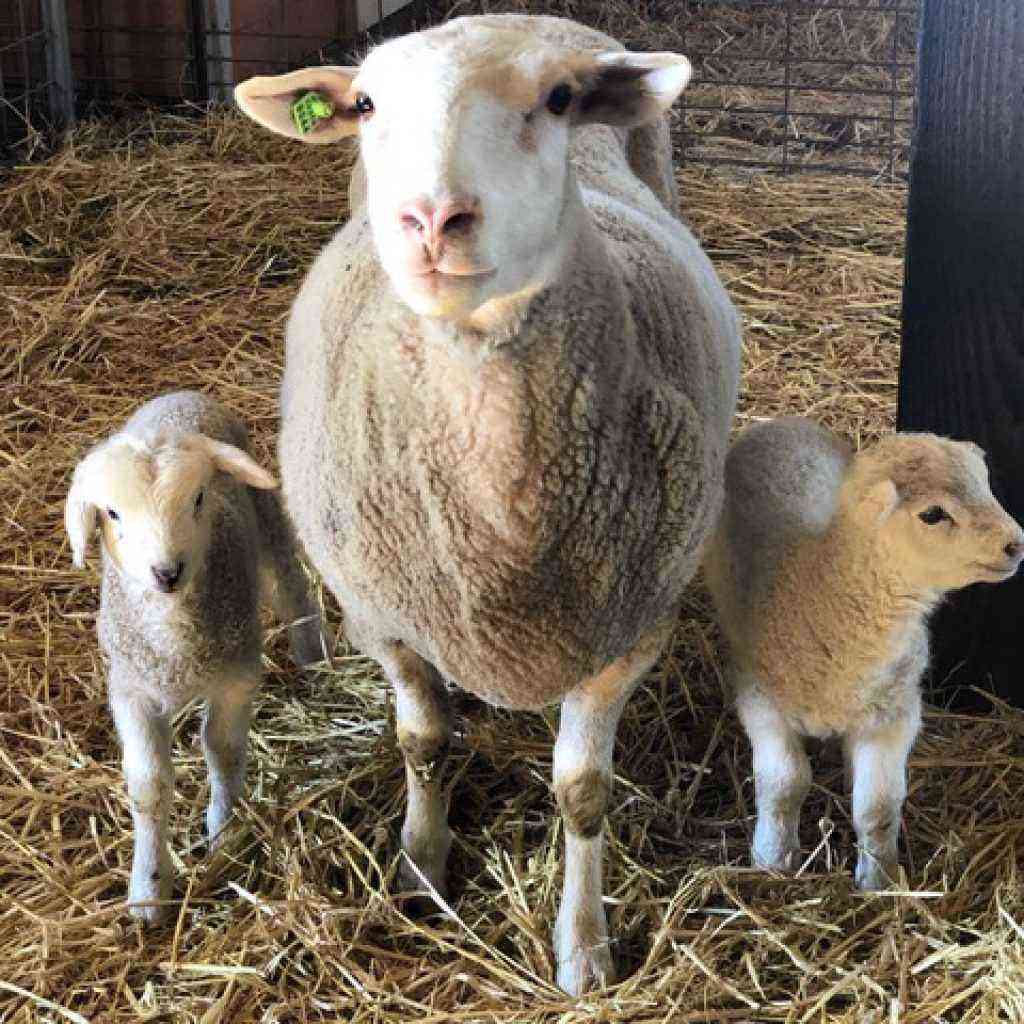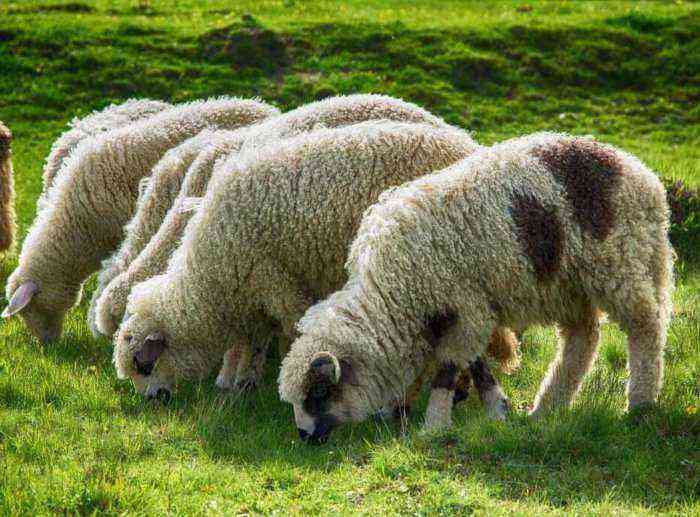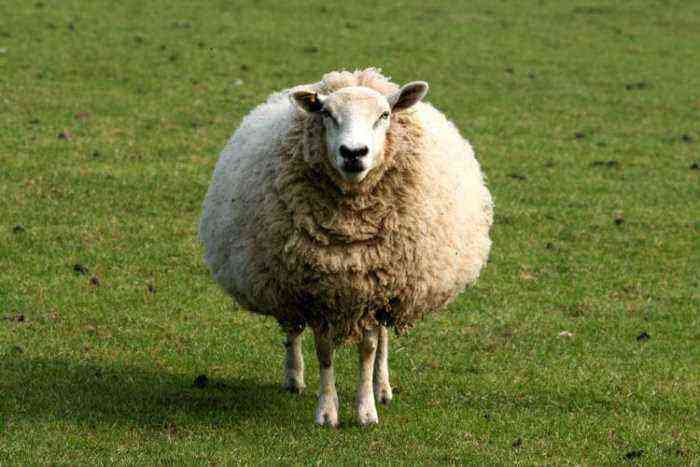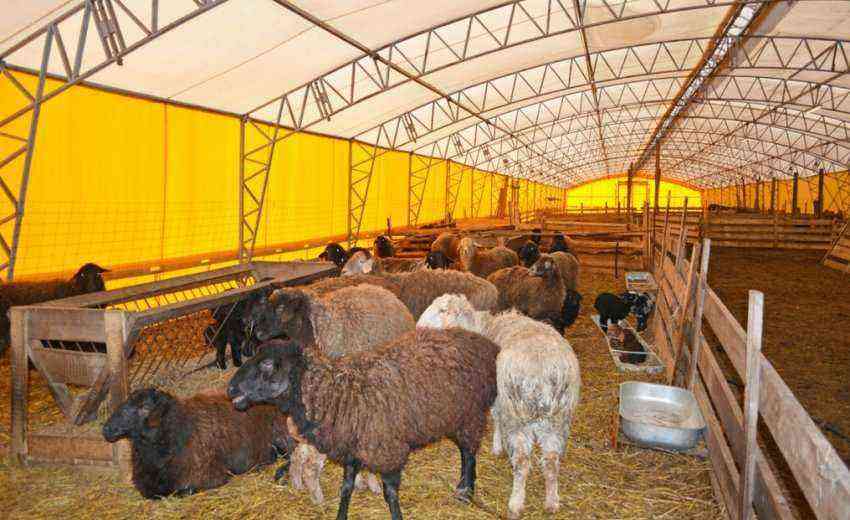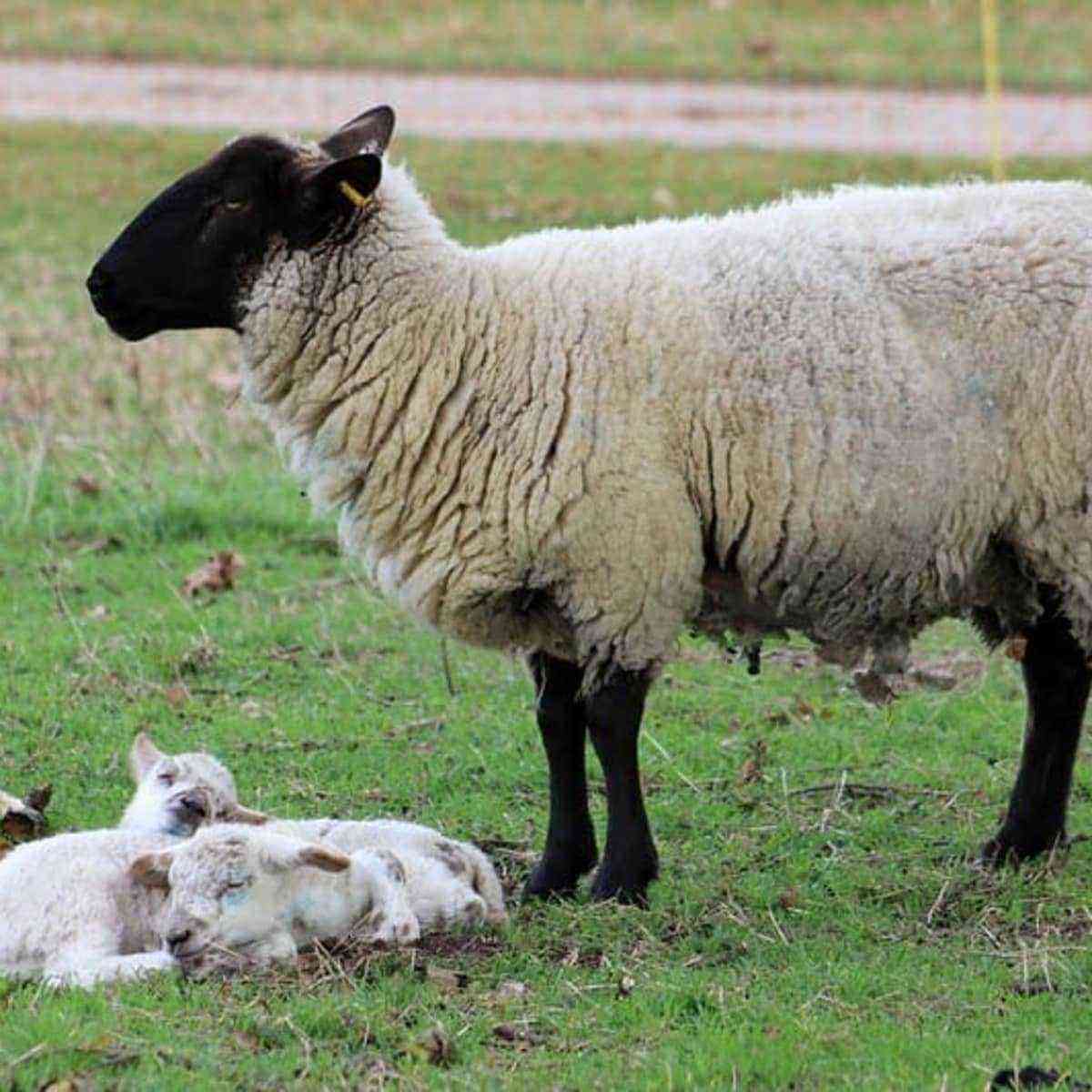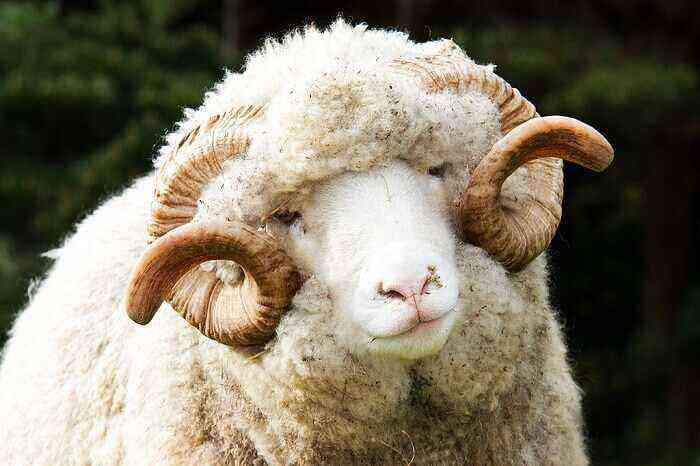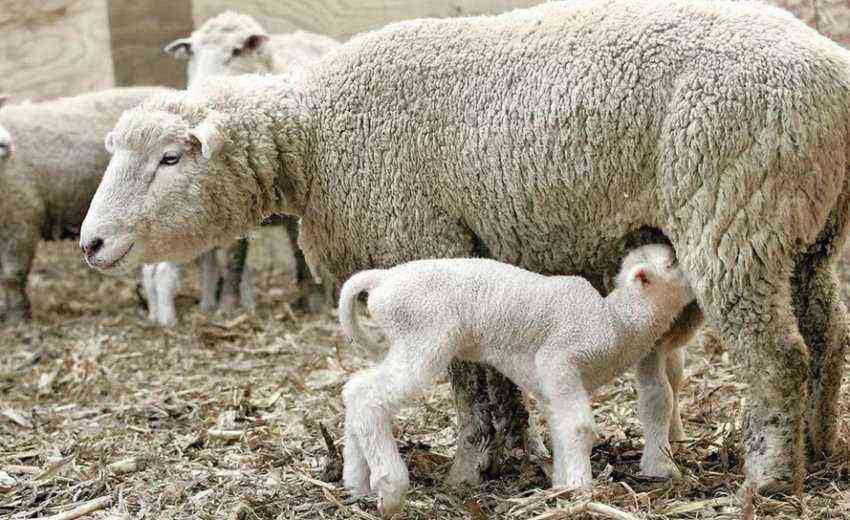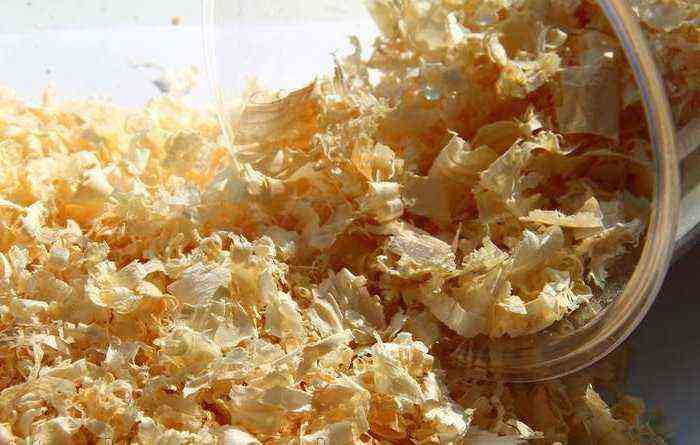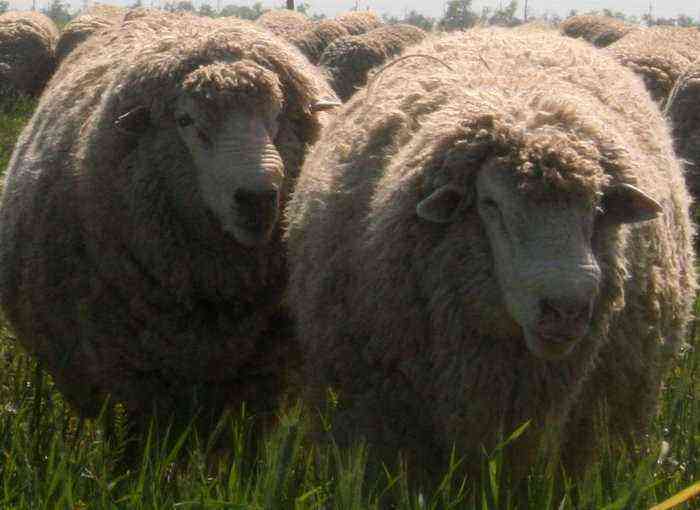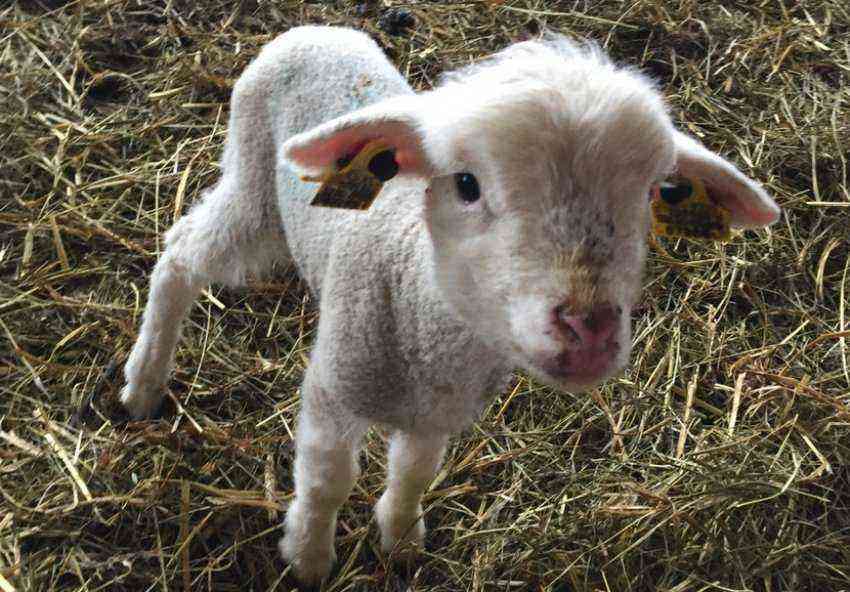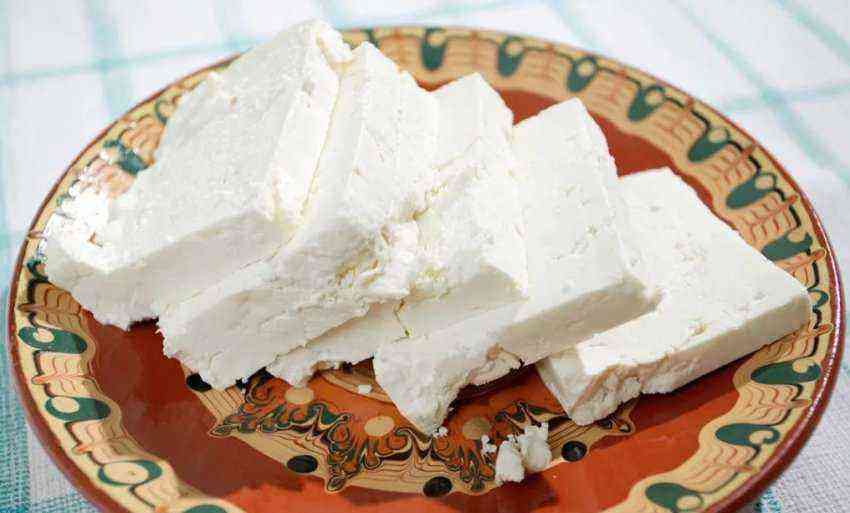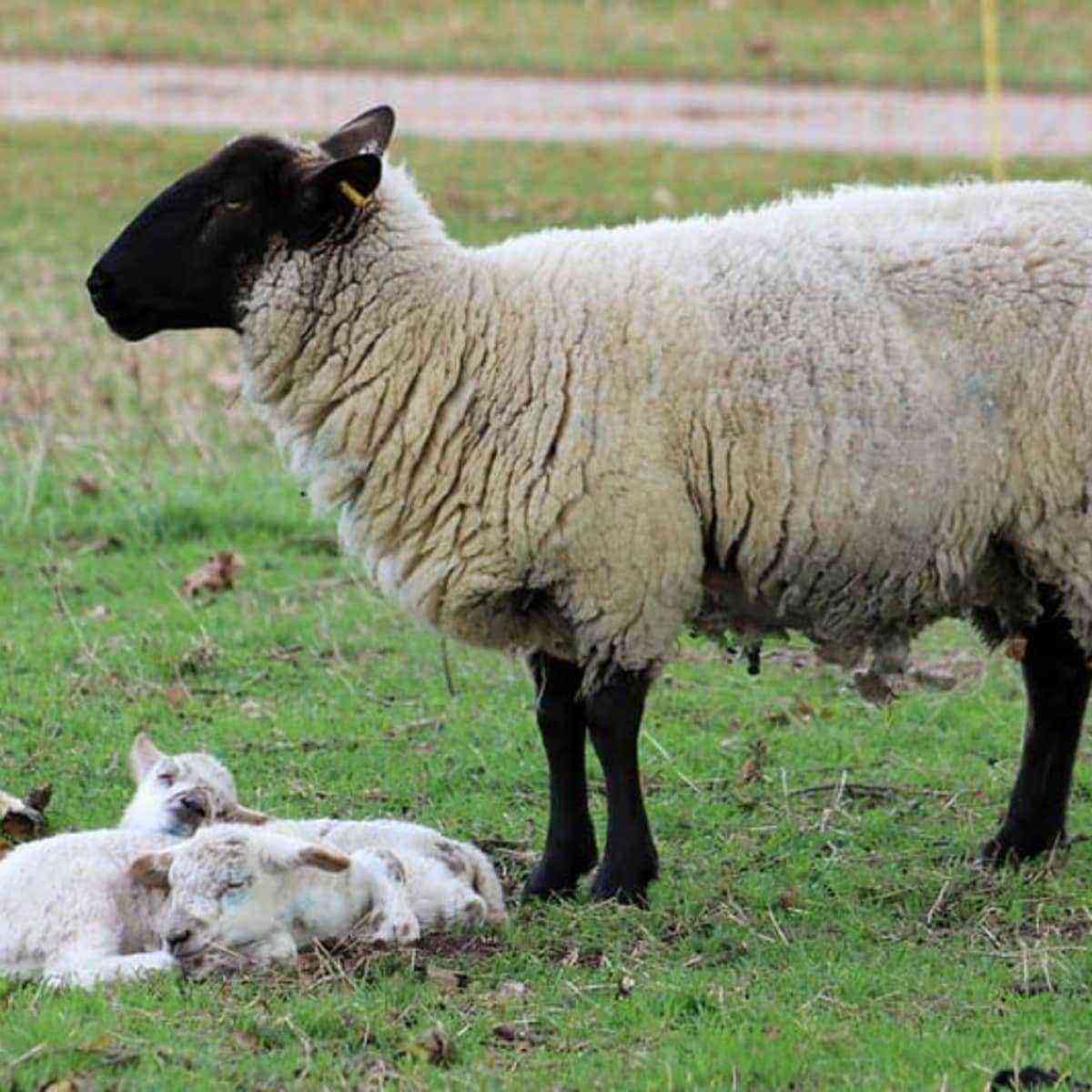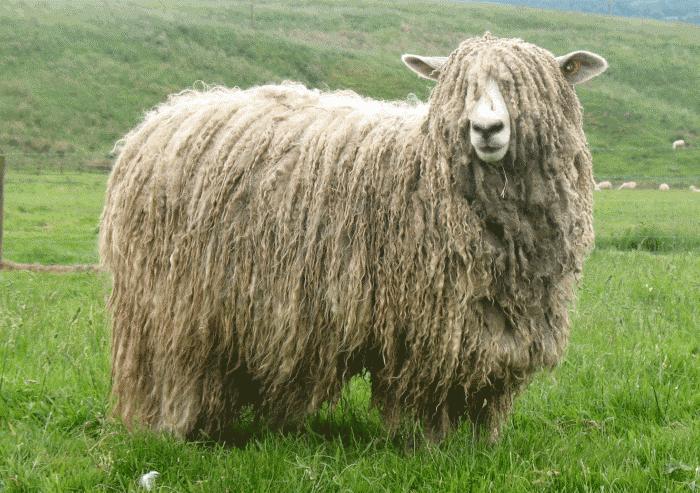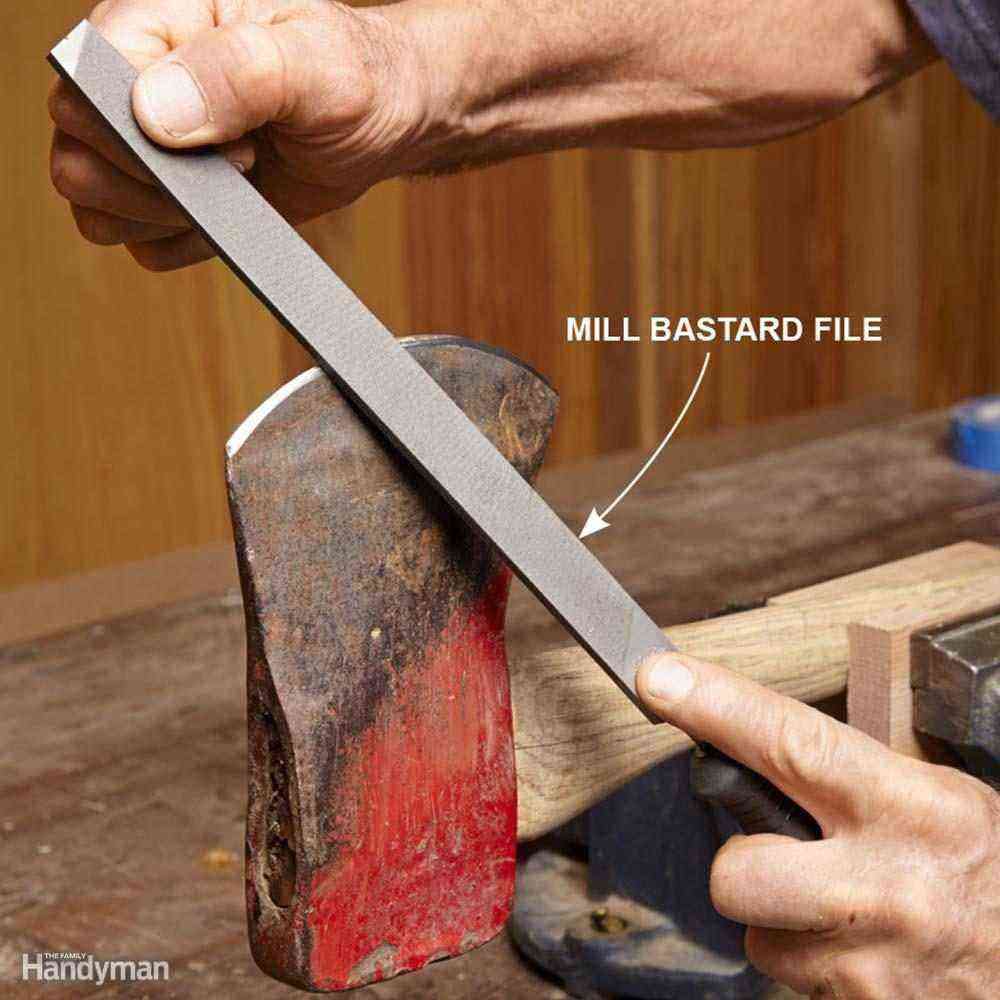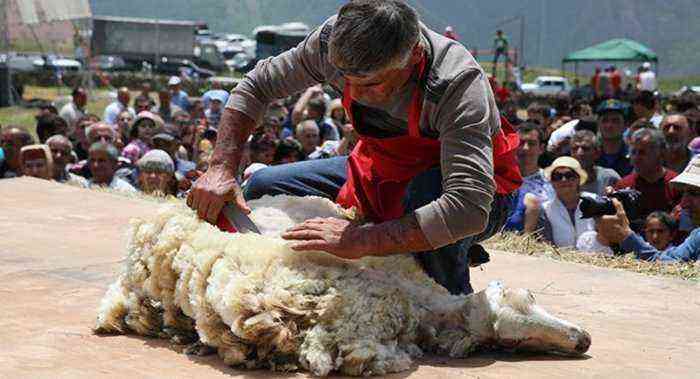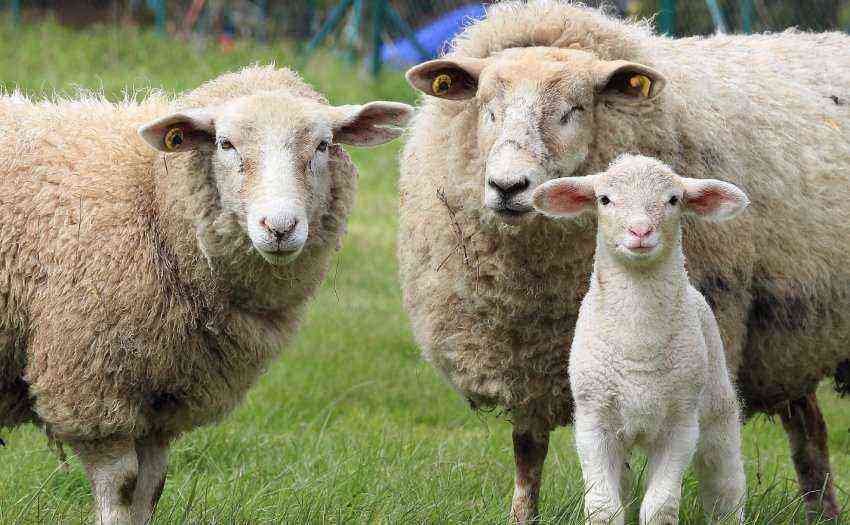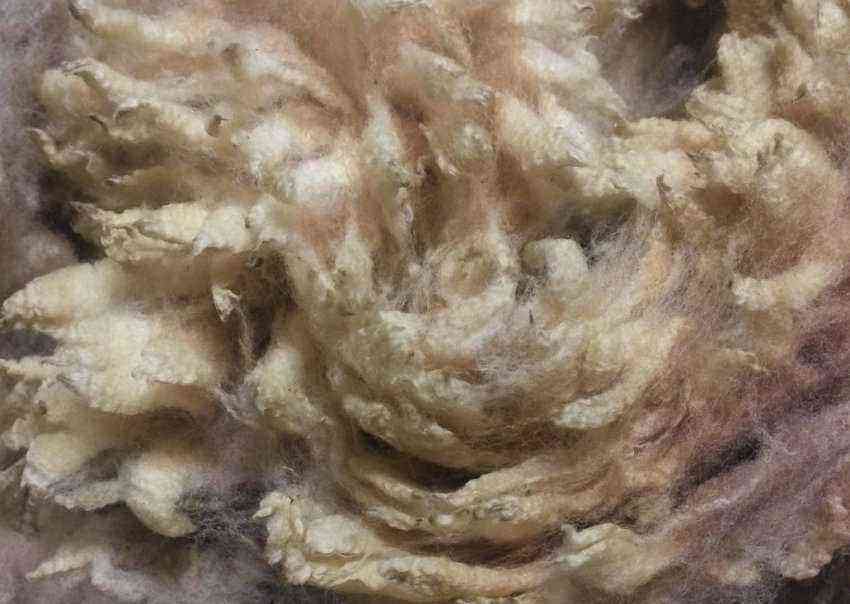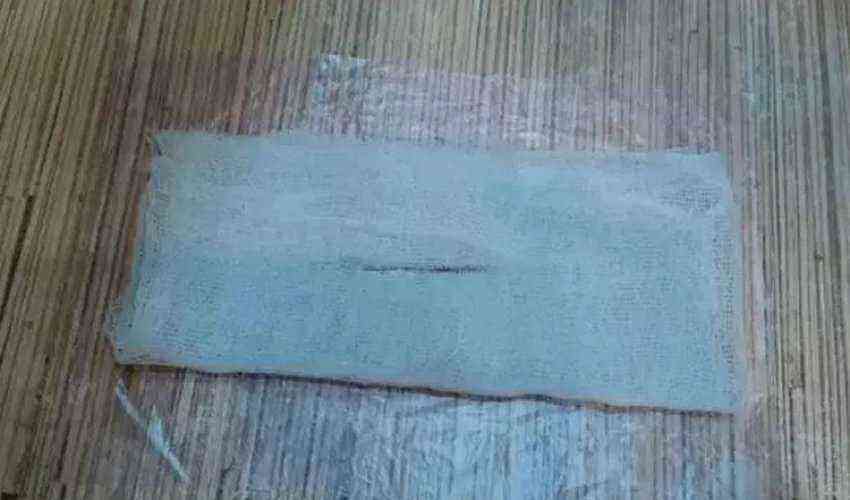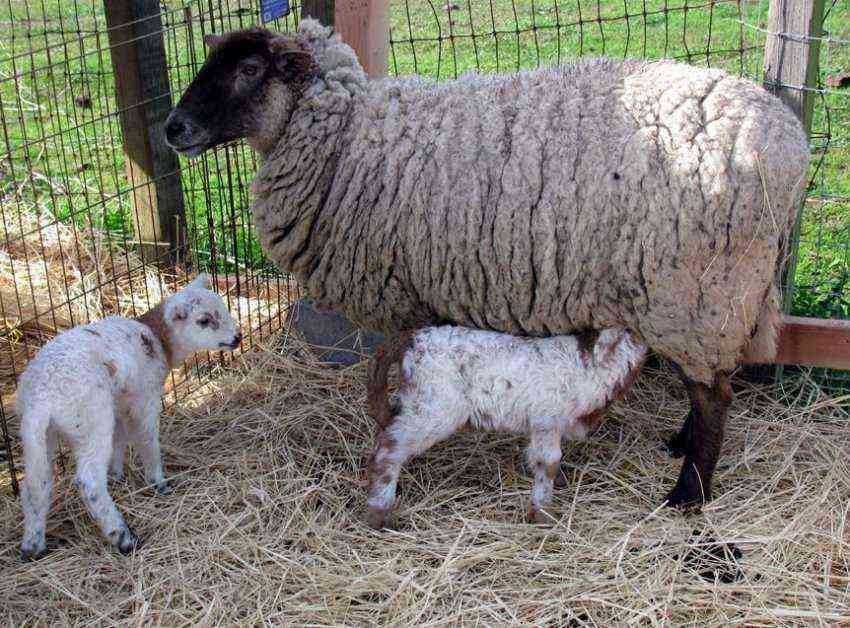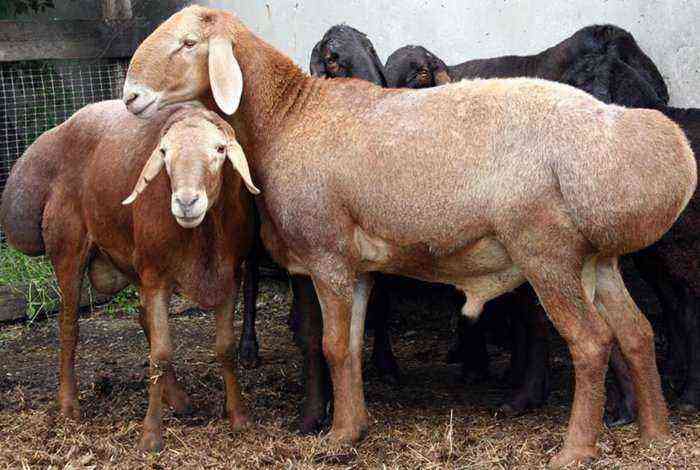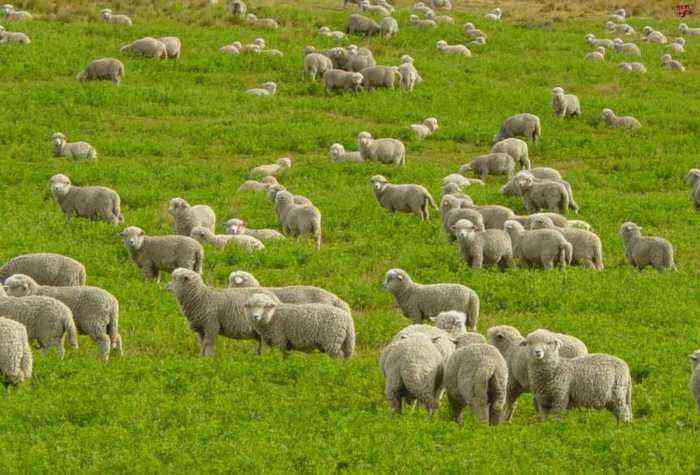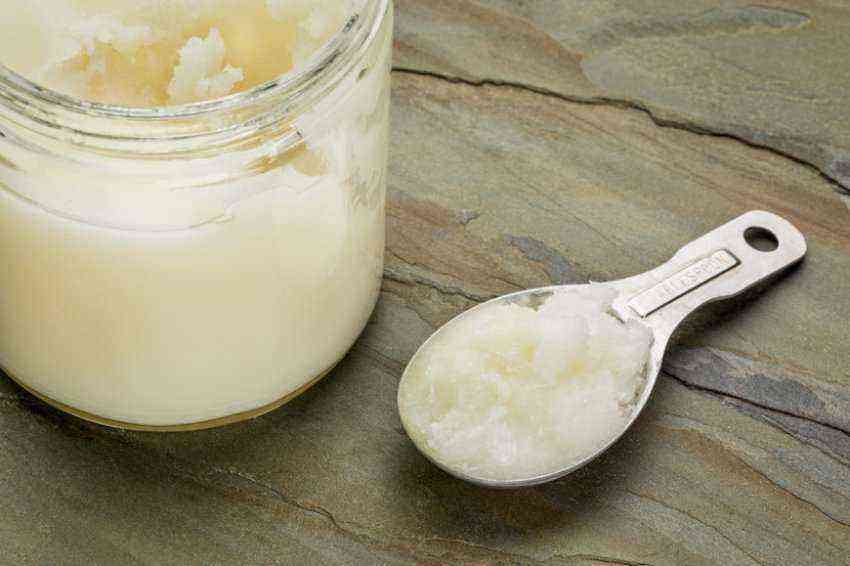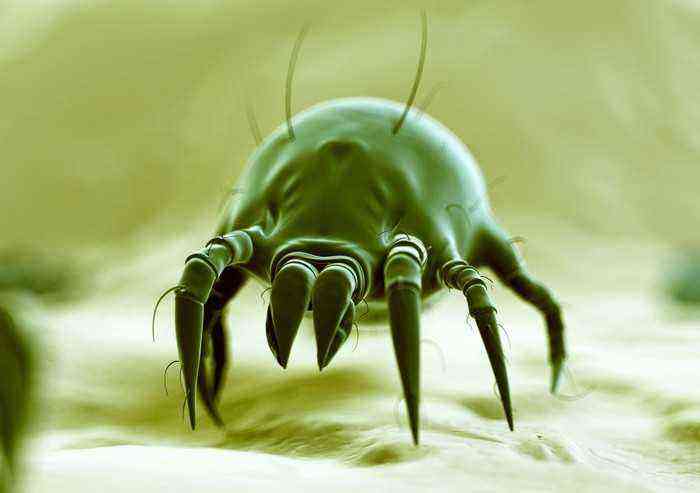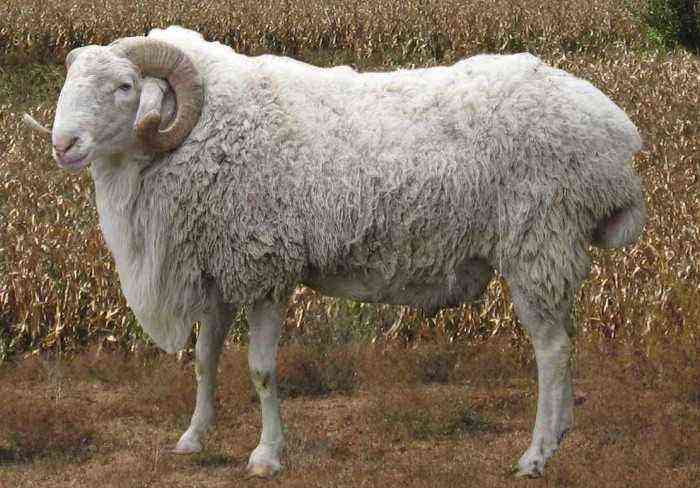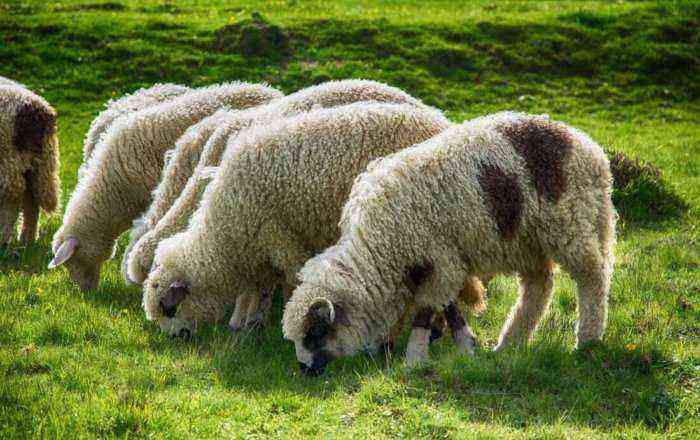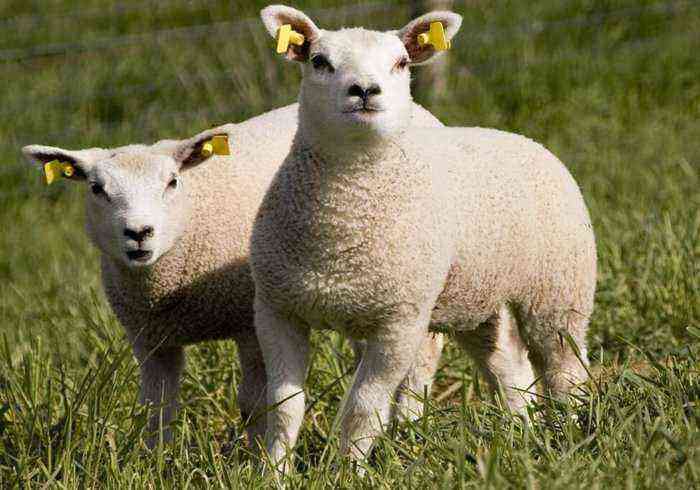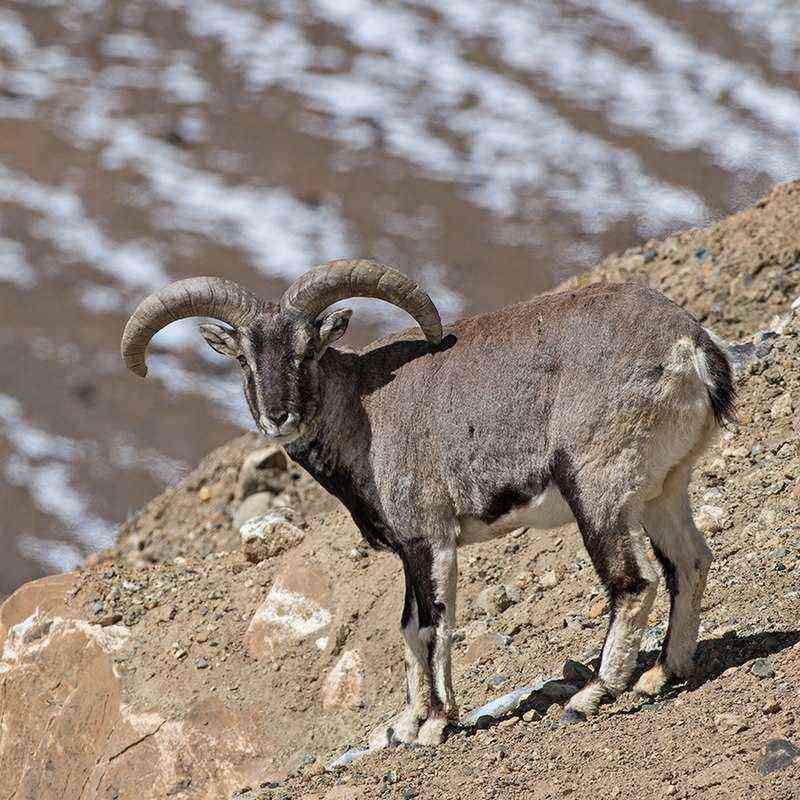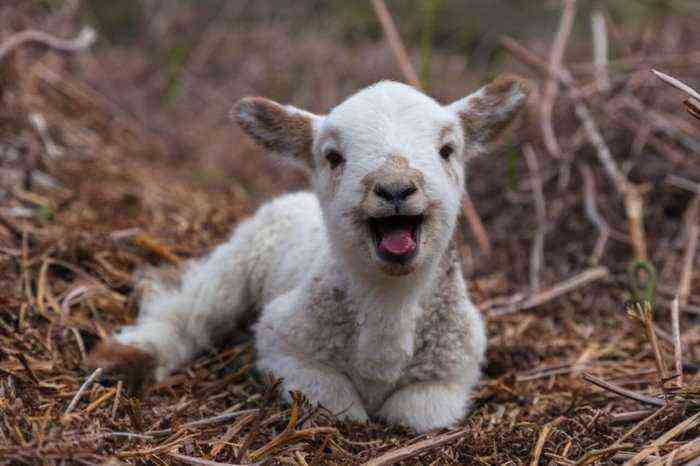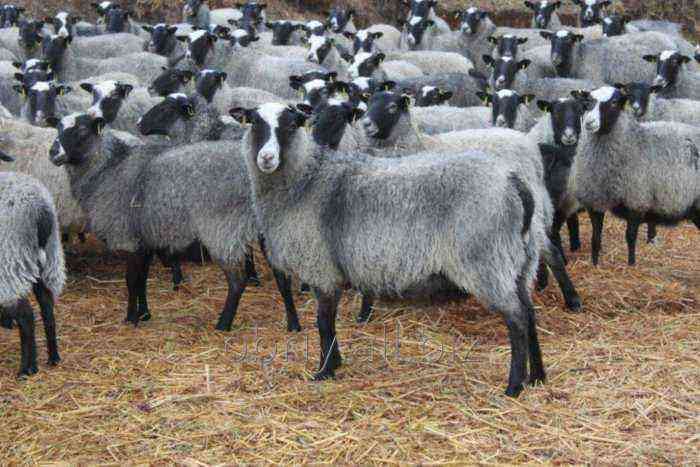When shopping for clothing or woven household items, you are often interested in the composition of the raw materials from which the goods are made. The designation on the label “wool” guarantees the naturalness and high quality of the material. This article will introduce you to the properties of wool and the production process of fabrics, yarn and products from them.
Features of sheep wool
Wool is a textile fiber obtained from the shearing of sheep. It is a complex protein that has evolved over millions of years to protect warm-blooded animals in different climates and is one of the most environmentally friendly, naturally renewable and fully biodegradable materials.
The quality of the product is determined by the diameter and length of the fibers, crimp, color and adhesive strength. The thickness of the fiber is the most important characteristic of wool, which determines the quality and price.
Woolen fiber is resilient and elastic – it can be bent 20 thousand times without damage (cotton breaks after 3 thousand bends, silk – 2 thousand). It has a natural crimp, which allows it to be stretched by a third with a return to its previous state.
The fibers have a complex cellular structure, so they easily absorb moisture vapor by almost a third of their own weight, but repel liquid. The absorbent properties of the fiber provide comfort in both hot and cold weather.
Check out

When the air is cool and humid, wool absorbs moisture and keeps a layer of dry, insulating air close to the skin.
When it’s warm, the same absorbent capacity absorbs perspiration and keeps the warmth of the dry air close to the skin, making natural thermoregulation more efficient.
Wool ignites at a higher temperature than cotton and some synthetic fibres.
It has a lower flame spread rate, low heat generation, low combustion temperature, does not melt or drip, emits less toxic gases and smoke. It absorbs sound like many other fabrics.
Wool is resistant to the buildup of static electricity because the moisture held inside the fabric conducts charges, so wool products are much less likely to spark and stick to the body. The natural colors of the fleece are white, cream, black, brown, silver, but the fibers are well dyed.
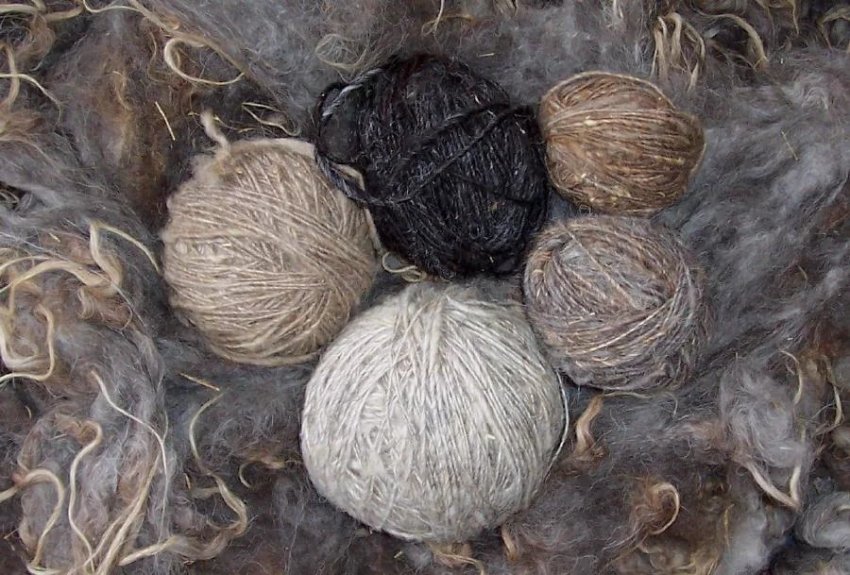
Due to this ability wool is known for its beautiful and rich colors. Sometimes wool “pricks” – this discomfort is caused by coarse fibers (more than 28 microns) in the composition of the product. Wool can be treated with chemicals or mixed with other fibers to remove the tartness.
Healing properties
Wool promotes a healthy lifestyle, has a therapeutic effect based on gentle contact with the skin.
- Also has healing properties:
- antimicrobial and antibacterial properties – absorbs unpleasant odors and inhibits the growth of mold, fungi and bacteria, does not support the growth of dust mites, which are the cause of asthma attacks and respiratory diseases;
- contact with the fibers stimulates the circulatory capillary system, stabilizes the heart rate, and thanks to the mild heating effect, the muscles relax, relieving tension and the effects of stress;
- relieves pain from arthritis and fibromyalgia, which promotes healthy sleep;
- in case of chronic skin diseases and eczema, wearing ultra-fine merino wool does not cause irritation and facilitates the course of the disease;
- has a naturally high level of UV protection and provides thermoregulation of the body to create a comfortable temperature;
- the fibers contain lanolin, which is produced by the sebaceous glands of sheep, it is used in cosmetic and medical preparations and is effective against rheumatism, enlarged skin pores, provides breathing for the whole body, improves blood circulation under the skin and slows down the aging process.
Important! Recent studies have shown that wool allergy comes from the alcohols of lanolin, the protective waxy layer that coats every strand of sheep’s wool. If there are allergic reactions to cosmetics containing lanolin, then there will be manifestations on wool.
Production, processing, sorting
The path of wool fiber from sheep to light industry is a technically complex and unique process that includes several stages for the manufacture of knitted yarn and fabrics, namely: shearing, cleaning, sorting, combing, spinning, weaving and finishing:
- A haircut. Sheep are sheared once a year, usually in the spring. Fleece on average weighs 3–8 kg.

- Classification and sorting. The fleece is sorted into fibers of different quality from different parts of the body. The best quality is from the shoulders and sides of the sheep, it is used for clothing, the lowest quality is from the shins, it is used for carpet yarn.

- Cleaning. Raw wool contains sand, dirt, grease, sweat, which is 30-70% of the total weight. To remove these contaminants, wool is washed in soapy alkaline solutions, wrung out and dried with a hair dryer. At this stage, lanolin is separated.
- Carding. The fibers are passed through a series of metal teeth that straighten them and form parallel strands. This removes short fibers and residual dirt.

- Spinning. Strands of fibers are twisted together into a single strand, which can be 3-4 strands. Since the fibers have good cohesion, they can be easily joined, stretched and twisted into yarn, which is then wound onto bobbins. The yarn can be coarse for carpets, finer yarns for upholstery, very fine yarns for high quality garments that can be woven or knitted. Worsted yarn is thin and smooth, while knitted yarn has a more voluminous texture.

- Weaving. The yarn is then woven into fabric. This can be done in two ways: knitted fabric is obtained by joining loops on knitting machines, woven fabrics are obtained on looms by interlacing weft threads with warp threads, which determine the length of the fabric.
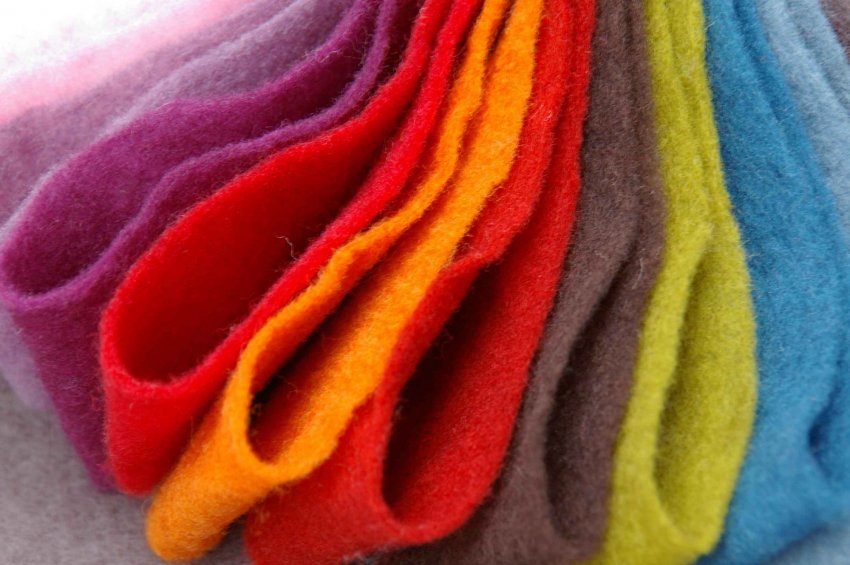
- Finish. The finished fabrics, worsted and knitted, go through a series of finishing processes to give the wool its characteristic softness and texture – washing, steaming, shrinking, ironing and dyeing. After that, the fabric is ready for the work of designers and fashion designers for the production of clothing, knitwear and woven interior products.

Directions in woolen animal husbandry
Wool differs in density, color, luster and other important properties, depending on the breed of sheep, age, shearing time, feeding ration and grazing areas. In the breeding of woolen sheep, 4 directions are distinguished, depending on the thickness of the resulting fiber.
fine-fleece
The thinnest (10-14 microns) and thin (15-25 microns) fibers 75-100 mm long are obtained from wild sheep (mouflons), the undercoat of certain types of coarse-wooled sheep, merinos of the old wool type. These are various Merino breeds of sheep from Australia (80%), New Zealand, South Africa, etc. The breeds are typical for desert and steppe regions.
Did you know? Napoleon’s conquest of Spain in 1809 made it possible to spread Merino breeds to other countries. Prior to this, the export of merino outside the borders of Spain until the XNUMXth century was punishable by death.
The finest Australian and New Zealand merino wool, with a fiber thickness of less than 16,9 microns, is the industry benchmark for quality. It is elastic and can bend 20 times before breaking and breaking.
The finer the fibers, the softer the wool, which is why merino wool is popular with luxury clothing brands. Merino sheep can produce fleece up to 4–6 kg per year. Rams give more than sheep due to their larger size. This amount of raw materials is enough for 4-5 sweaters.
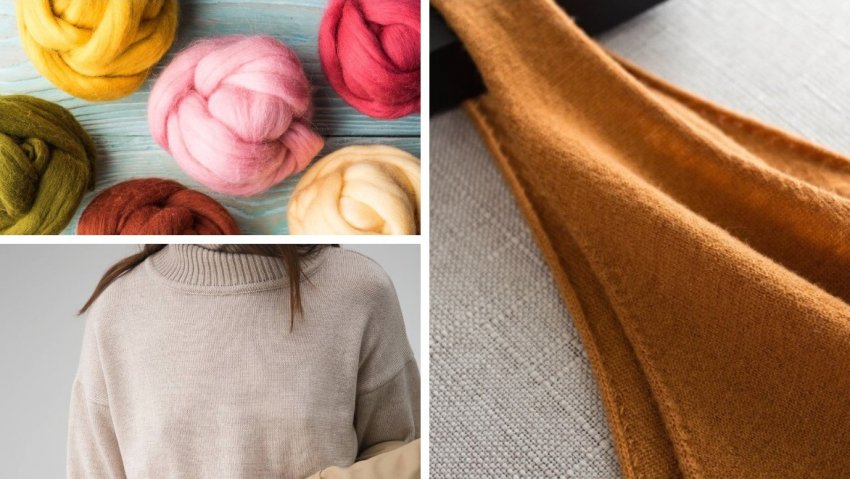
Semi-fine fleece
Such raw materials are produced by sheep that are bred in regions with a mild, humid climate – the Tsigai breed, new breeds of semi-fine-wool sheep in Russia, short-haired breeds of England (Romney March, Lincoln), mixtures of fine-fleeced and coarse-wooled sheep and some coarse-wooled breeds. The average fiber thickness is 26–40 µm.
semi-coarse
The thickness of semi-coarse-haired fibers (such as fur or carpet) is 41–60 microns. Raw materials are obtained from coarse-haired and some types of long-haired breeds that are grown in mountainous areas.

Long-haired sheep produce raw materials that are not as soft as merinos, but they are long-stapled (up to 20-25 cm) and durable, which is convenient when spinning, and products from such raw materials acquire a silky sheen.
Rough-haired
The sheep from which the coarse fleece is obtained are the breeds of deserts and semi-desert lands. Breeds of meat and meat and dairy direction also give coarse and semi-coarse fiber. The thickness of coarse fibers is over 61 microns. They are used for outerwear, felt or carpet making. They are more durable and less prone to pilling.
Did you know? The ancient Greeks lined their helmets with felt, and the Roman legionaries used woolen felt breastplates to protect against stab wounds.
Application: where and for what use
The use of sheep wool by humanity goes back thousands of years. Spinning, felting, weaving are among the most ancient crafts. We know such products as the shoes used by the Sumerians, the woven fabrics of the Egyptian pharaohs, the felt yurts of the nomadic tribes.
Today, most wool (11,5–24 microns in diameter) is turned into soft fabrics for clothing and yarn for knitwear. The rest is used in the production of sweaters, socks, blankets, rugs, carpeting, insulation and upholstery.
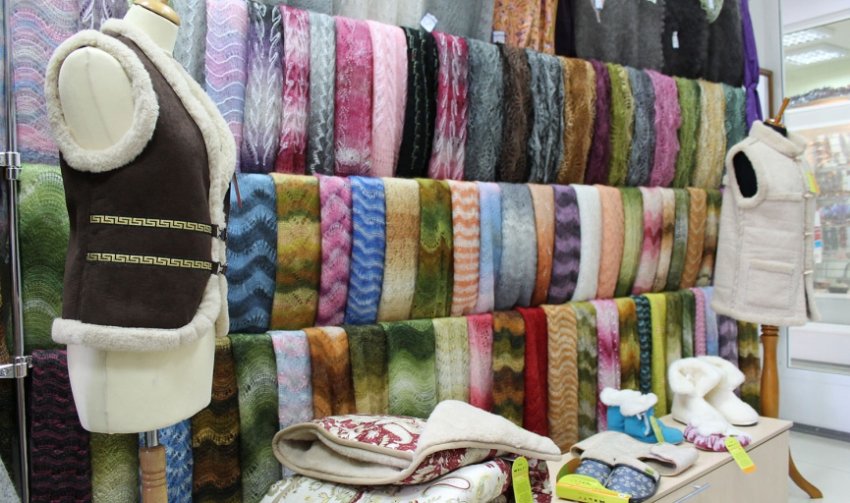
Wool carpets are fire resistant and are used on trains and planes for safety reasons. Wool is used in the clothing of firefighters, soldiers and people in other professions where there is a risk of fire.
Using woolen car covers or carpeting reduces the risk of electric shock due to the buildup of static electricity when a person touches a grounded object.
Wool felt covers piano hammers and serves to absorb odors and noise in heavy equipment and stereo speakers. Sauna hats and slippers are also made from felt.
 On the billiard table, the covering is made of woolen cloth, and 200 meters of yarn are wound inside the baseballs to compensate for the force of the impact.
On the billiard table, the covering is made of woolen cloth, and 200 meters of yarn are wound inside the baseballs to compensate for the force of the impact.
Wool is used in reusable cloth diapers. The outer side of the wool fiber is hydrophobic (repels water), while the inner side is hygroscopic (attracts water), allowing for wicking and leaving the upper dry.
In addition, the wool material is waterproof, breathable and antibacterial.. Merino wool is used in the production of baby blankets and sleeping bags. Woolen underwear, according to recent studies, prevents irritation and rashes from sweat because it absorbs moisture more easily than products made from other fibers.
A mixture of wool and Kevlar is widely used in body armor, making it lighter, cheaper and more effective in wet conditions than Kevlar alone, which loses 20% of its effectiveness when wet. The interlacing of wool and Kevlar fibers allows for a reduction in the number of layers – body armor with 28-30 layers of mixed fabric can provide the same level of bullet resistance as 36 layers of one Kevlar.

As an animal protein, wool can be used to fertilize the soil – it is a source of nitrogen (17%) with a slow release. In general, sheep’s wool is quite versatile and easily mixed with fibers from other animals and plants to obtain materials of various compositions.
How clothes are made from sheep’s wool
In Egypt, archaeological excavations have unearthed clothing made from wool made around 3400 years ago, highlighting the fact that people have considered it useful and comfortable since ancient times.
- Advantages of wool clothes:
- does not wrinkle;
- easy to clean and resists contamination;
- provides comfort in heat and cold;
- retains its shape
- has antistatic properties – does not “stick” to the body and does not accumulate charges;
- durable.
factory way
The factory method of making clothes implies the presence of a technological process, special equipment, qualified personnel, designers and fashion designers. This allows us to produce products in large volumes and high quality.
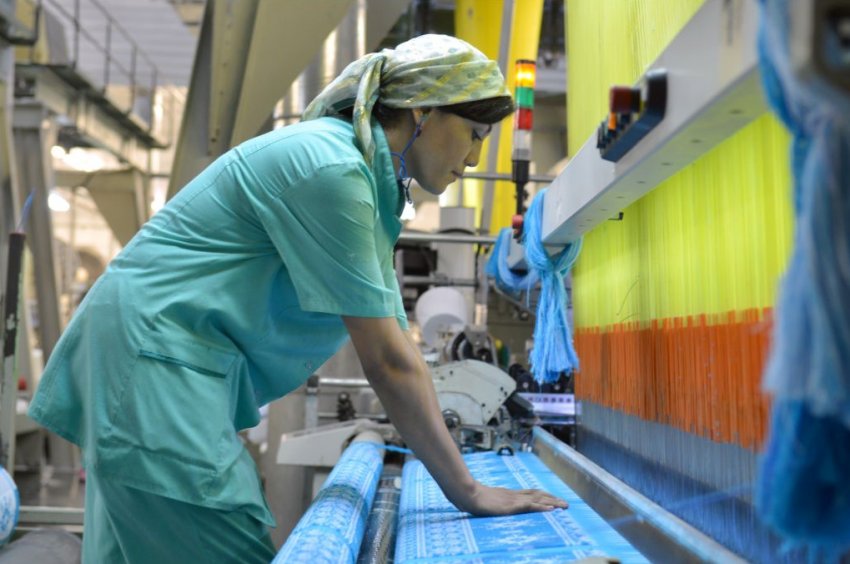
Factory production steps:
- preparation of models, specifications and cutting methods;
- supply of materials, fabrics and accessories;
- creating templates, patterns, sorting by size;
- review of samples and preparation for mass production;
- production and quality control;
- delivery to the consumer.
Manual mode
By hand, you can process raw wool, spin yarn, weave linen and tapestry, felt, from which hats, sauna sets, shoes (slippers and felt boots), medical clothes for heating (belts, knee pads) are made. The ability to knit will allow you to create handmade things from yarn – sweaters, scarves, hats, socks, gloves and mittens.
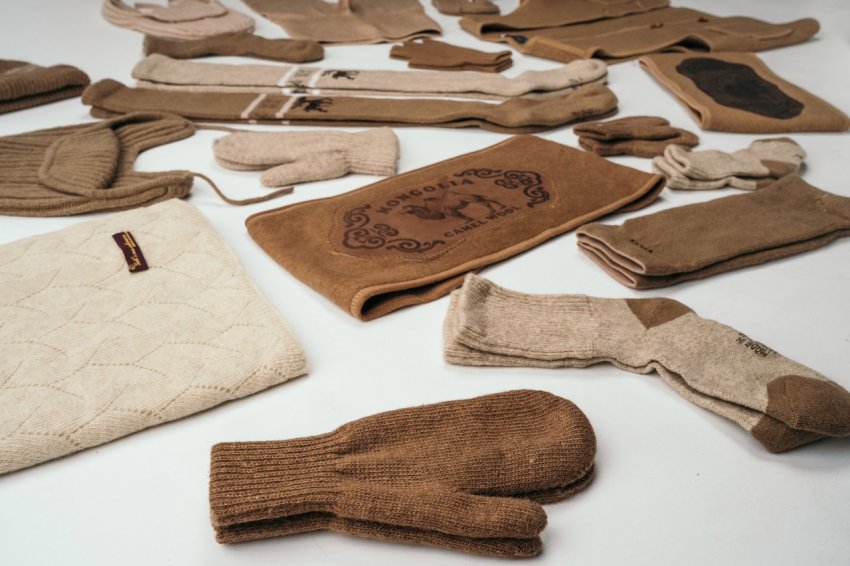
The ability to sew and the presence of a sewing machine will help to make individual and unique things from the finished woolen fabric. The felting method is used to make toys, paintings, clothes, shoes, bags. The manual method is often called “handmade” and such a product is highly valued.
Combined method
For creative people, there are many ways to combine ready-made woolen fabric or clothing with handicrafts. For example, you can complement the finished dress with a knitted collar, sew on woven pockets or an appliqué on a hand-knitted sweater. From the finished knitted fabric, you can sew a dress or jacket.
Did you know? The seventh wedding anniversary is called woolen. The best gift for this anniversary would be a woolen blanket or a handmade blanket.
What products are produced
Today, wool is used to make products such as:
- fabrics (tweed, drape, cloth, felt, felt);
- bed linen, mattresses, mattress toppers, blankets, blankets;
- scarves, hats;
- leggings, socks, tights;
- rugs, carpets, tapestries;
- gloves, mittens;
- jumpers, sweaters, cardigans;
- trousers, suits, coats.
Features of processing at home
In many areas of sheep breeding, the technique of processing fleece into yarn at home is still preserved. This process is not unlike industrial processing and can become a valuable skill that will allow you to make many useful things and clothes for a family or business.
The recycling process is labor intensive, and mastering the spinning wheel will probably be the hardest part of the task, but with practice you can master it.
Video: how to wash sheep’s wool
It will take several steps to turn the raw material into yarn:
- Remove debris and dirt.
- Wash raw materials in hot soapy water, adding 1 cup of soda ash at the first wash if the wool is oily (lots of lanolin). Do not let the water cool down, otherwise the lanolin will “grab” the wool again.
- Wring out and rinse the wool several times.
- Lay on a towel or mesh for ventilation and dry.
- Fluff and comb with coarse brushes or combs, connecting into long unidirectional fibers (you can use items for combing pets).
- Form the fibers by dividing and pulling the ribbon strands (roving) and wind them on bobbins. You can use a lid with a hole through which to push and pull the wool with a knitting needle – the thinner the ribbons, the thinner the yarn will turn out.
- The last step is spinning. Here you can use hand spinning wheels or a spindle. Either single strands are spun, or several are connected, depending on the desired thickness of the yarn. Sometimes, for greater strength, a cotton thread is taken as the basis.
- The yarn is ready for further work, whether weaving or knitting.
Important! If soda is used during washing, then you can not keep the wool in water for more than 20 minutes – this can damage the fiber.
How to make your own sheepskin blanket
The well-known large fluffy Carpathian sheep wool blankets are made using a special handmade technology on a wooden loom.
Masters assure that it is not difficult to master the technique of weaving, but you need to have special equipment and skills. You can knit a blanket using ready-made yarn, or sew a “blende” by laying woolen batting between layers of cotton fabric.
Video: pillow blanket on your own
Wool-filled quilt can also be made in several ways:
- Pillow blanket. Depending on the desired size of the blanket, squares-pillows are cut out of the fabric, which are filled with clean and fluffy wool. The pads are sewn together end-to-end with a zigzag seam, forming a whole canvas. For a double blanket (220 × 180 cm) you will need 396 squares measuring 10 × 10 cm. When cutting, seam allowances should be taken into account, so you need to cut out the details for 1 pillow measuring 22 × 12 cm. Factory quilts are made with a single filler flooring, which sometimes happens uneven. This leads to the fact that in some places there are voids. And in this blanket of pillows there will be no voids.
- Solid Filled Blanket. For such a blanket, a fabric cover is sewn the size of a future product. On the wrong side, the wool is laid out in a layer. One side of the cover is twisted together with a layer of filler and turned completely on the front side. The resulting “bag” of wool is quilted with a hand stitch. Such blankets are often made in the Caucasus.
Video: do-it-yourself woolen blanket
Having become acquainted with the properties of wool and its processing, you can find training videos on the Internet and master any technology for making yarn from fiber and creating finished products that will bring satisfaction from the creative process and the results of labor.


